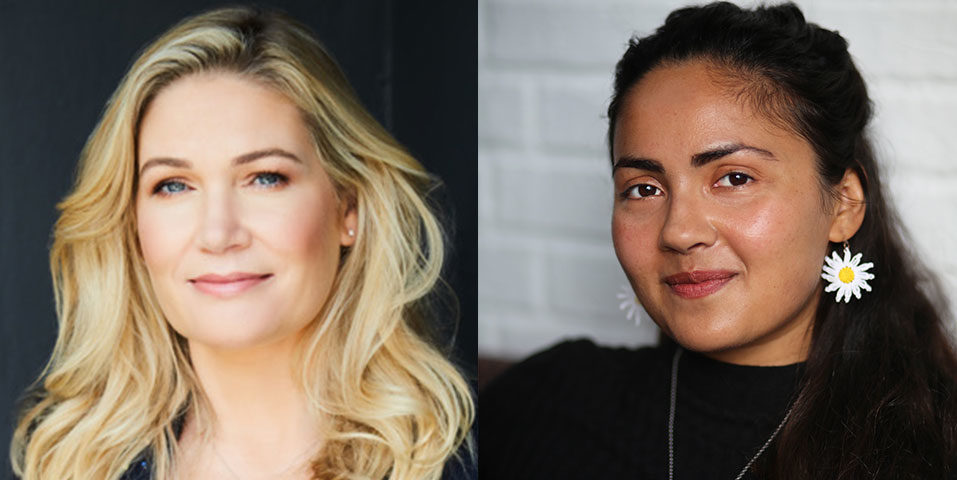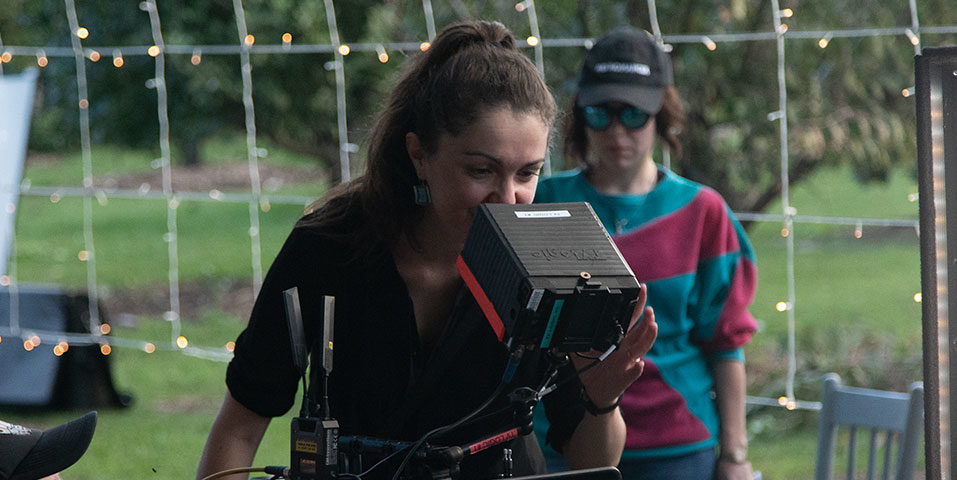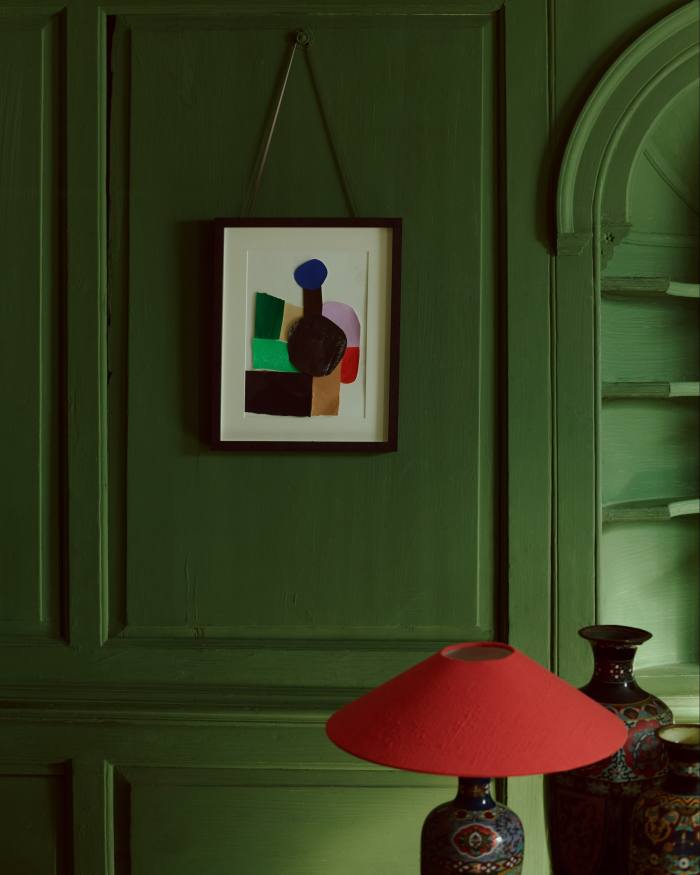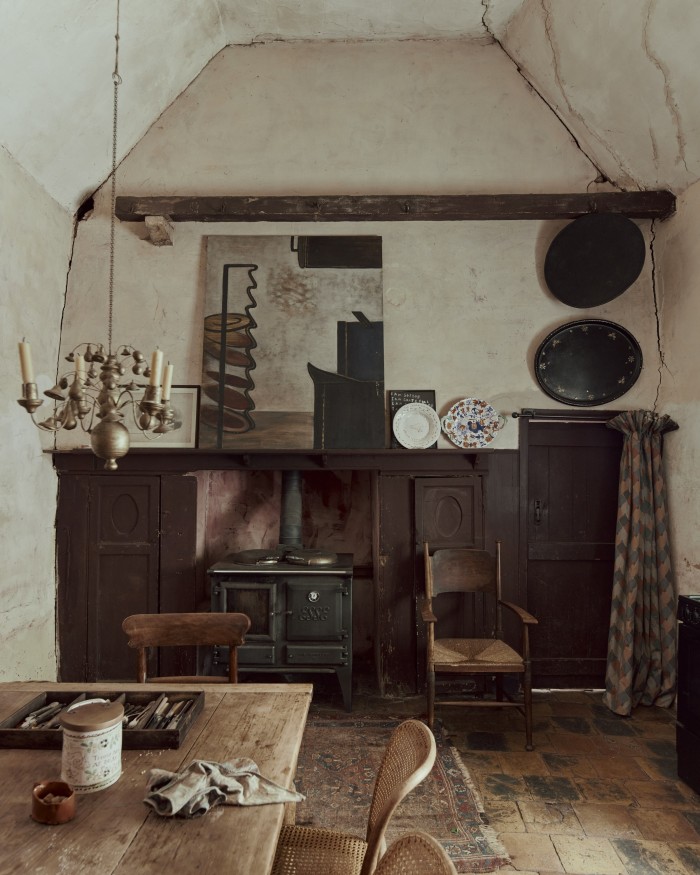Life isn’t meant to be lived perfectly…but merely to be LIVED. Boldly, wildly, beautifully, uncertainly, imperfectly, magically LIVED.”
― Born to Run Fans Say: Life is University Too
Via ABC - Bruce Springsteen Sells Music Catalog in Massive Deal
A great singer, writer, film 🎥 maker or creative novelist requires a capacity for "determined stupor," an ability to retreat from the world. But the world never stops making demands... indeed, the world never ever stops making demands - while brilliant minds or characters and colourful machines like Brown Fords are hitting The Roads on earth 🌎
So much has changed when it comes to the emerge of new artistic talent. Thanks to Netflix, other streaming services and social media, unknown actors can now awake to global fame: just look at the phenomenal ascent of South Korean model and actress Ho Yeom Jung, of Squid Game, who picked up 15m Instagram followers in the first three weeks of that show’s release.
The career of Australian actress Odessa Young has followed a more traditional trajectory. Her performance 🎭 in the 2020 biopic Shirley, about the writer Shirley Jackson, was critically acclaimed, and this month she took on the role of Jane Fairchild, the fearless protagonist of Mothering Sunday, based on the Graham Swift novella about illicit relationship conducted in the aftermath of the First World War. It is perhaps her outsider’s perspective that makes her alluring in the role. Or maybe it’s just because she’s from Australia, an incubator for acting talent that can be exported around the world. Young joins the list of names, including Margot Robbie, Sarah Snook, and, naturally, Cate Blanchett who are reshaping the female view in television and film, and her assured performance in this, her most high-profile role in cinema to date, suggests a great a great career to come.
AFTRS is the nation’s premier screen arts and broadcast school – the only Australian education institution to consistently make The Hollywood Reporter‘s prestigious annual list of the top film schools in the world. We empower Australian talent to shape and sharetheir stories with the world by delivering the most future-focused education, research and training.
AUSTRALIAN FILM TELEVISION AND RADIO SCHOOL
AFTRS students and alumni have swept the 2021 Australian Cinematographers Society NSW Awards, winning 24 prizes across 14 categories, two of those for AFTRS students productions.
The work of Bachelor of Arts Screen: Production student Jono Le Grice and 2020 Master of Arts Screen graduate Ian Tyley have been recognised in the Student Cinematography category for their work on AFTRS student films. Le Grice claimed Gold for 2021 BA production, You and Me By the Sea, while Tyley received silver for 2020 MA capstone, Endlessnessism.
Hat 🎩 tip to the crew “In Our Hands film” shoot: 🎥 🎞
MEdia Dragon Bloggers at AFTRS
SONIA SMALLACOMBE: THE SIGNIFICANCE OF NATIONAL RECONCILIATION WEEK
AFTRS Elder in Residence explains the significance of National Reconciliation Week and breaks down the monumental events that it commemorates.
The projects and participants selected for the second New Perspectives Pitch Lab have been announced today. New Perspectives Pitch Lab, a training initiative for emerging non-fiction talent with a social impact project in development or production, is an initiative of the Australian Film Television and Radio School (AFTRS), Doc Society and the Australian International Documentary Conference (AIDC), in partnership with Screen NSW.
- Our Country is a landmark First Nations-led documentary series exploring what Country means and what’s required to protect it, by revealing the extraordinary yet endangered wonders of the natural world. Founded on First Nations’ knowledge systems and philosophies, this series celebrates a love for and connection with Country as the way towards a better future. Series creator/writer and host Lille Madden is a proud Arrernte, Bundjalung and Kalkadoon woman from Gadigal Country. She is a passionate conservationist, storyteller, and young climate leader. Producer Yale McGillivray is a proud Kalkatungu and Australian South Sea Islander woman who has worked as a Junior Executive Producer across ABC Entertainment and Comedy and as a digital producer for ABC Regional & Local, Foreign Correspondent, and most recently ABC Indigenous.
THESE ARE THE PARTICIPANTS OF THE 2021 NEW PERSPECTIVES PITCH LAB
BLOODY BRILLIANT WORLD PREMIERE FOR AFTRS STUDENT FILM
It’s Like Living in a Film Set
The magic of Sophie Wilson’s Crowland Manor
The artist’s Lincolnshire home has the beguiling beauty of a building stopped in time
Aimee Farrell.
Photography by Michael Sinclair
DECEMBER 3 2021
For the artist Sophie Wilson, there’s joy in imperfection. Where some see flaws, she finds fragility and a beguiling beauty. This is as true of her painterly asymmetric ceramics as it is of the inside of her home – a time-worn interior where any remnant of angularity has been softened by close to half a millennia of life. Symmetry is of little interest to Wilson.
“There isn’t a single straight line in the whole house,” she says, gesturing to the undulating walls and wonky corridors of the 16th-century home she shares with four of her children. Acquired six years ago, the Manor House sits in the low-lying Fenland town of Crowland, Lincolnshire, a secluded place that’s notable for its medieval abbey, rare three-way bridge and a glorious absence of gentrification.
Though handsome, the simple ashlar-stone exterior of the estate reveals nothing of the faded Georgian grandeur within. It’s only the rear Palladian façade, added in the 1730s, that hints at the Grade II*-listed property’s opulent past life, when its 4,000 acres of farmland stretched all the way to Crowland Abbey and beyond.
The Green Drawing Room seen from the Patterned Hall – the damaged ceiling exposed local Fenland reeds that are more than 300 years old © Michael Sinclair
The original panelling of the Green Drawing Room dates back to 1730 © Michael Sinclair
When Wilson first made the two-hour trip to view the house from her former home in east London, having dramatically expanded the boundaries of her search following months of uninspired house tours, she was immediately struck by the layers of life held within its walls.
“I had a very real sense of the births and the deaths, and the laughter and the arguments that had happened here,” she says. “I wanted to become a part of that noise, both wonderful and terrible at the same time – nothing else compared.” Fortunately for Wilson, the previous owner was keen to pass the property on to an individual who recognised that preservation does not necessarily equate to perfection. “He wanted someone who understood the house’s surfaces, not someone who would sanitise it and turn it into a boutique hotel,” she says. Some spaces have been utterly abandoned for centuries
Modernisation couldn’t be further from her mind, even though she was faced with some harsh realities when moving in. Most pressingly, the cellar was flooded and needed urgent structural repairs. “The house had essentially been standing in a pool of water for about a hundred years,” she says. The Herculean effort to make the interior structurally sound is still very much in progress.
Many of the 23 rooms remain unused, and large swaths of the house are dimly, if rather romantically, lit (electricity is yet to reach the old servants’ quarters on the third floor). A small number of rooms have central heating supplemented by open fires and wood-burning stoves that Wilson feeds throughout the day – a demanding but meditative routine.
Sophie Wilson and her daughter Olive in the dining room of their Lincolnshire home – with their dog Pelham © Michael
Sinclair Wilson acquired the Manor House, in Crowland, Lincolnshire, six years ago © Michael Sinclair
The Little Kitchen – one of three kitchens in the house – serves as a mudroom-cum-studio © Michael Sinclair
Practicalities aside, it’s this untouched, rather chaotic quality that makes the house so magical. There’s a table-tennis table in the patterned hallway, and a once-majestic ballroom is now a ramshackle store for her antique furniture finds. Some spaces have been utterly abandoned for centuries, which means that everything from the Georgian floor-to-ceiling wood panelling to the bright rows of early Victorian Minton ceramic tiles that line the floors remain wonderfully intact.
“There were no hideous bathrooms or kitchens to pull out,” says Wilson of this rare and remarkable sweep of original historical features. “This country is full of period properties but it’s very unusual to find one that hasn’t been interfered with.” With neglect has come conservation, lending the space a dramatic, almost cinematic feel. “It’s like living in a film set,” says Wilson. “Every room is so theatrical.”
Wilson tending a fire in the walled garden – her children George and Olive are on the scaffolding in front of the rear Palladian façade © Michael Sinclair
Now Wilson is forging her own role in her home’s rich history. Soon after moving in, and with her youngest son safely installed in school, she began setting up shop in the patterned hallway of the house, selling jams made from foraged fruit, handmade soaps wrapped in marbled papers and, when she failed to find local makers, her own handcrafted ceramics, whose terracotta forms were inspired by the shards of English slipware and pottery she’d found while digging up the tangled forest of garden. (Before training in fine art at Edinburgh, Wilson did ceramics at A-level.)
The enterprise became known as 1690, a year that Wilson found inscribed in corners and above doorways throughout the house. Unsurprisingly, the footfall in this corner of the Fens was minimal, but the shop became a study in branding and a lavish stage set for Wilson’s “handsome, rather than pretty” artisanal wares on social media.
As poetic as it is photogenic, her @1690works feed ignited a swift trade, and her now signature white slip and terracotta ceramics have become her main concern. Her first online customer was Charlie Porter, the founder of the antiques and storytelling site TAT. Soon after, the writer Clover Stroud commissioned a plate etched with the words “Love and light to you always, my dear sister” for her sibling, potter Emma Bridgewater.
The Middle Kitchen is the “nerve centre” of the family’s daily life – and where Wilson makes her pieces © Michael Sinclair
Typically working with one coat of slip, fired twice, Wilson uses an ancient Roman technique known as sgraffito (meaning “scratched” in Italian) or incision, etching phrases and quotations into the wet white surface to reveal the red tones beneath. It’s a high-stakes method that requires an instinctive feel for the materials.
“I have to tend to them as though they’re babies,” says Wilson of the rows of ceramics drying in her kiln in the butler’s pantry. I’m a bit of a one-man band – I always just give things a go” Sophie Wilson One of her bestselling plates borrows a line from the British-Indian poet Nikita Gill that reads: “I am more wolf than woman, and I am still learning how to stop apologising for my wild.”
It speaks volumes of Wilson’s own fearlessness. For every project she has a dedicated scrapbook filled with visual references that encompass everything from Renaissance inlaid ivory chests to dress patterns to Laura Ashley prints. “It’s about storytelling,” she says of the rigour applied to each brushstroke and lotus-flower motif. What unifies her eclectic vision is the rich colours, which are pulled straight from the deeply saturated limewash-hued walls of her house.
“I want every piece to feel at home in this space,” says Wilson. “So I’ve evolved this very personal palette of time-worn tones.”
The Great Room, where Wilson’s furniture is currently in storage © Michael Sinclair
This summer, Amanda Brooks invited Wilson to take over a space at her Cotswolds store, Cutter Brooks. Wilson conjured a replica of her original homespun shop, which she describes as “the kind of place Molly Weasley would go for her essentials”, and created an entire ceramics series inspired by Chinese Imari ware, putting a 1690 spin on the brightly tinted blue-and-white pottery style. Comprising jugs and plates, these pieces started life as a fluid painting that Wilson made with her children at the dining table in the cosy but chasm-like Middle Kitchen, where the family spends much of their time.
“It reminded me of the kinds of vessels you’d see in the background of a Matisse painting,” she says of the artwork, which set her on a mission to replicate its “splashy quickness” in three-dimensional form.
The Pink Bathroom, with two 19th-century Japanese collages on the wall © Michael Sinclair
The limewashed walls of Wilson’s bedroom – battens support the plasterwork where the family’s cat fell through the ceiling © Michael Sinclair
It’s typical of Wilson’s approach, which is nothing short of academic. With every collaboration comes the mastery of a new technique. For the design store 8 Holland Street, she worked in a form resembling famille verte Chinese porcelain from the Qing dynasty-era, creating lamps from 19th-century brush pots with Vietnamese leaf hat-inspired shades.
For The New Craftsmen she’s revived the historic salt box. As uneven as the contours of her home, these sturdy, pictorial ceramic containers come complete with English hardwood lids, and inscriptions of the words: “Thou Art As Dear As Salt”.
1690 limited-edition, handbuilt terracotta salt box © Michael Sinclair
Wilson finds the challenges unique to each ceramic form utterly compelling. For her next act, she hopes to master the alchemy of oxides and mocha diffusion techniques, mimicking the ancient materials used before the age of ready-made chemicals.
The latest iteration of her store, @1690store, has now launched online. “I’m a bit of a one-man band,” she admits. “I always just give things a go – it’s the Yorkshire harridan in me.”
Recommended How To Spend It Notes from the castle: ancient and modern find harmony in a spectacular Scottish seat Her longer-term dream is to install a huge glass window looking onto the garden in the Middle Kitchen – aka her operations centre – where she sits and makes her designs.
For now, Wilson is happy in the knowledge that her children can enjoy the kind of liberated, analogue life she experienced herself growing up in Scarborough.
Besides river swimming and exploring the endless wetland waterways, their current favourite pursuit is fishing.
“They still call this ‘the crumbly house’,” she says. “But I think they’re beginning to realise theirs is a rare and beautiful home.”5













